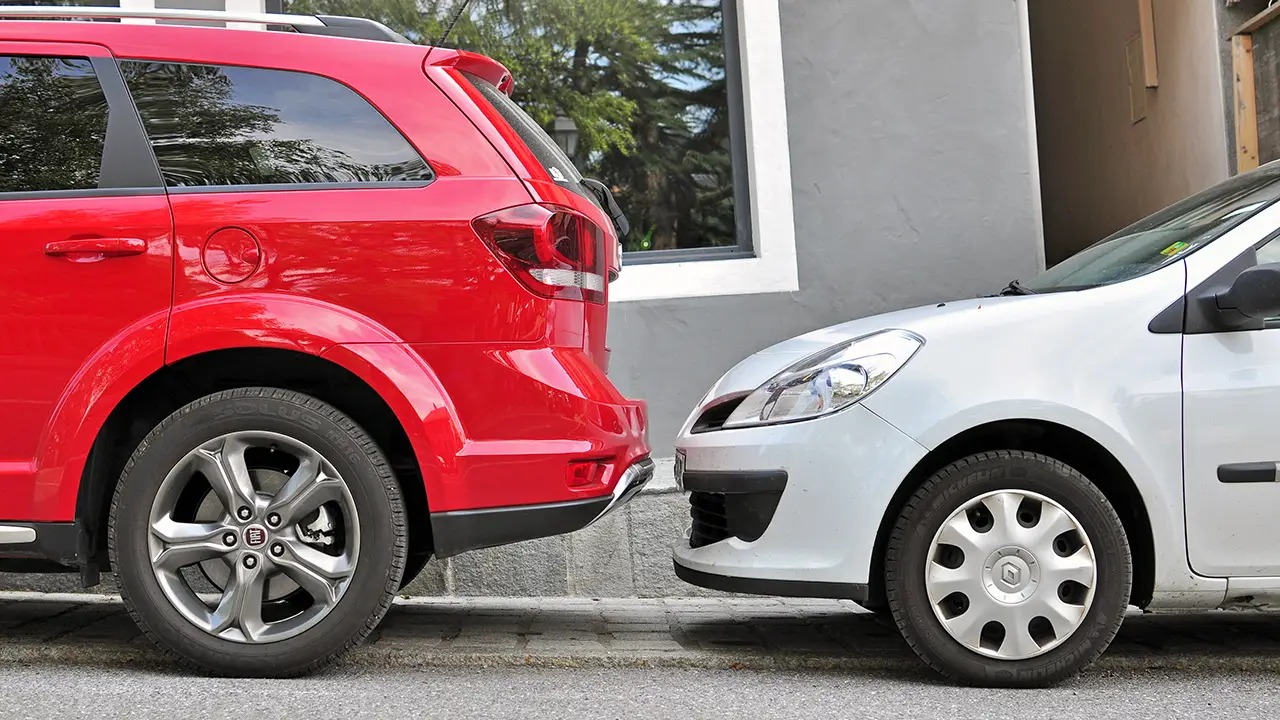

Finance
How Long To Add A New Car To Insurance
Published: November 28, 2023
Looking to add a new car to your insurance? Learn how long it takes and get expert advice on finance options to make the process seamless.
(Many of the links in this article redirect to a specific reviewed product. Your purchase of these products through affiliate links helps to generate commission for LiveWell, at no extra cost. Learn more)
Table of Contents
Introduction
Adding a new car to your insurance policy is an essential step to ensure you have adequate coverage and protection. However, the process of adding a new vehicle to your insurance policy can vary depending on various factors. Understanding these factors and the steps involved can help you streamline the process and get your new car insured without any delays.
When you purchase a new car, it’s important to remember that your existing auto insurance policy typically does not automatically extend coverage to the new vehicle. You’ll need to take specific steps to add the car to your insurance policy and obtain the necessary coverage.
In this article, we will delve into the factors that can affect the time it takes to add a new car to your insurance policy. We will also outline the step-by-step process to ensure a smooth and efficient experience.
So, let’s explore the world of car insurance and discover how we can add a new car to our policy quickly and effortlessly.
Factors Affecting the Time to Add a New Car to Insurance
Several factors can influence the time it takes to add a new car to your insurance policy. Understanding these factors can help you manage your expectations and plan accordingly. Here are some key factors to consider:
- Insurance Provider: Different insurance companies may have varying processes and timelines for adding a new car to a policy. Some larger providers may have streamlined systems in place, while smaller companies may take a bit longer to process the request.
- Policy Type: The type of insurance policy you have can also impact the time it takes to add a new car. If you have a single-car policy, adding a new vehicle may involve more paperwork and coordination. On the other hand, if you have a multi-car policy, the process may be simpler and quicker.
- Existing Coverage: Your current coverage and the level of protection you have can affect the time it takes to add a new car. If you already have comprehensive coverage, adding a new vehicle with similar coverage may be quicker. However, if you’re adding additional coverage types, it may take longer to review and process.
- Vehicle Type: The type of car you’re adding to your insurance policy can also impact the time it takes. Certain types of vehicles, such as luxury or high-performance cars, may require additional documentation and evaluation before they can be added to the policy.
- Financial Responsibility: Your insurance provider will need to verify your ability to financially cover the new car’s insurance costs. Factors such as your credit history, driving record, and any previous claims can influence the time it takes to add the vehicle.
While these factors can have an impact, it’s important to note that adding a new car to your insurance policy is generally a straightforward process that can be completed in a reasonable amount of time. By understanding these factors and being prepared with the necessary information, you can help expedite the process and ensure a smooth transition for your new vehicle.
Gathering Necessary Information
Before you can add a new car to your insurance policy, it’s important to gather the necessary information to provide to your insurance provider. This information will help ensure a smooth and efficient process. Here are the key details you should gather:
- Vehicle Information: Collect all the relevant details about the new car, including the make, model, year, and vehicle identification number (VIN). This information is crucial for accurately adding the vehicle to your policy.
- Driver’s License: Make sure you have a valid driver’s license and provide a copy to your insurance company. This allows them to verify your identity and driving eligibility.
- Driving History: Be prepared to provide information about your driving history, including any previous accidents, traffic violations, or claims. This helps your insurance provider assess your risk profile and determine appropriate coverage and pricing.
- Proof of Ownership: Ensure you have the necessary documentation to prove ownership of the new car. This typically includes the vehicle title or bill of sale.
- Additional Drivers: If there will be additional drivers for the new car, gather their information as well, including names, dates of birth, and driver’s license details. This ensures that all drivers are properly covered under the policy.
- Finance or Lease Information: If you financed or leased the new car, provide your insurance provider with the relevant information about the financing or leasing company. This helps ensure that all parties involved are properly protected.
- Additional Coverage Requirements: If you have specific coverage requirements, such as gap insurance or roadside assistance, gather the necessary details. This ensures that your policy includes all the desired coverage options.
By gathering and organizing this information in advance, you can save time and ensure a smooth process when adding your new car to your insurance policy. It is also helpful to have the documents available in both physical and digital formats for ease of submission.
Contacting Insurance Provider
Once you have gathered all the necessary information, the next step in adding a new car to your insurance policy is to contact your insurance provider. This can typically be done through phone, email, or online portals, depending on your provider’s preferred method of communication. Here’s what you need to do:
- Find Contact Information: Locate the contact information for your insurance provider. This can usually be found on their website, insurance documents, or through a customer service representative.
- Initiate Communication: Reach out to your insurance provider and inform them about your intention to add a new car to your policy. Provide them with all the necessary details, including the vehicle information and any additional drivers.
- Ask About Process and Timelines: Inquire about the specific steps involved in adding the new car and ask about any estimated timelines. This will help you understand what to expect and plan accordingly.
- Submit Required Documentation: Your insurance provider may require you to submit certain documents to support the addition of the new car. This can include proof of ownership, driver’s license copies, or finance/lease information. Make sure to provide these documents promptly to avoid any delays.
- Clarify Coverage Options: Discuss the coverage options available for your new car. Your insurance provider can guide you through the various types of coverage and help you select the options that best suit your needs and budget.
During your conversation with the insurance provider, take the opportunity to ask any questions or address any concerns you may have. It’s important to have a clear understanding of the coverage terms, policy premiums, and any additional factors that may affect your insurance coverage.
Remember to document all communication and keep a record of the names of the representatives you speak with, as well as any reference or confirmation numbers provided. This can be useful for future reference or in the event of any disputes or discrepancies.
By contacting your insurance provider in a timely manner and providing all the necessary information, you can ensure a smooth transition as you add your new car to your policy.
Reviewing and Selecting Coverage Options
As you add a new car to your insurance policy, it’s important to review your existing coverage options and consider any additional coverage you may need. This step allows you to ensure that your insurance policy adequately protects your new vehicle. Here’s what you should do:
- Understand Current Coverage: Take the time to review your current insurance policy and understand the coverage you already have in place. This includes liability coverage, collision coverage, comprehensive coverage, and any other optional coverage you may have.
- Evaluate New Vehicle’s Value: Consider the value of your new car and its potential risk factors. Newer or more expensive vehicles often require comprehensive coverage to protect against theft, damage, or loss.
- Assess Additional Coverage Needs: Determine if you have any specific coverage needs for your new car. For example, if you’re leasing or financing the vehicle, you may need gap insurance to cover the difference between the car’s value and what you owe in case of total loss.
- Review Deductibles and Limits: Check the deductibles and limits on your existing policy and assess if they need to be adjusted to accommodate the new vehicle. Higher deductibles can lower your premium, but ensure you can comfortably afford the deductible in case of an accident or claim.
- Consider Bundling: If you have multiple vehicles or other insurance policies, such as homeowners or renters insurance, inquire about potential discounts for bundling. Combining your policies with one insurer can often result in lower premiums.
- Compare Policies and Prices: Shop around and compare quotes from different insurance providers. This allows you to evaluate not only the prices but also the coverage options and customer reviews. Choose an insurer that offers the right balance of affordability, reliability, and quality coverage.
During this process, it’s important to carefully weigh the cost of coverage against the potential risks and financial impact of not having sufficient insurance. Making an informed decision will help ensure that you have the right coverage in place to protect your new car.
Once you have reviewed and assessed your coverage options, inform your insurance provider of your decisions. They will work with you to update your policy and provide you with the necessary documentation to reflect the changes.
By taking the time to review and select the appropriate coverage options, you can have peace of mind knowing that your new car is adequately protected.
Providing Payment and Finalizing Policy
After reviewing and selecting the coverage options for your new car, the next step is to provide payment and finalize your insurance policy. This process involves completing the necessary paperwork and ensuring that all financial aspects are taken care of. Here’s what you should do:
- Payment Information: Contact your insurance provider to discuss the payment options available. They will provide you with the details on how to make the payment, whether it’s through a one-time lump sum or installment payments.
- Payment Due Date: Confirm the due date for your insurance payment. It’s crucial to make the payment before or by the due date to avoid any lapses in coverage.
- Payment Method: Determine which payment method works best for you. Options may include online payment, credit or debit card, electronic bank transfer, or mail-in payment.
- Verify Payment Confirmation: Once you have made the payment, it’s important to obtain confirmation from your insurance provider. This confirmation serves as proof of payment and should be kept for your records.
- Sign Paperwork: Your insurance provider may require you to sign paperwork to finalize the policy. This could include a new policy declaration page, policy endorsements, or any other required documents.
- Review Policy Details: Carefully review the details of your new policy, including coverage limits, deductibles, and any added endorsements. Ensure that all the information is accurate and meets your expectations.
- Update Emergency Contact Information: Provide your insurance provider with updated emergency contact information. This could include phone numbers or email addresses of individuals who should be contacted in case of an accident or an emergency involving your new car.
By providing payment and finalizing your policy in a timely manner, you ensure that your new car is fully insured and protected. You’ll also have peace of mind knowing that you’re complying with legal requirements and have taken the necessary steps to safeguard your investment.
Remember, it’s crucial to keep a copy of all documentation related to your insurance policy, including proof of payment and the signed paperwork. These documents may be required for future reference or in case of any disputes or claims.
With the payment made and the policy finalized, you can now enjoy your new car with confidence, knowing that you have the right coverage in place.
Verifying Coverage and Documentation
After completing the process of adding a new car to your insurance policy, it’s important to verify that the coverage has been successfully updated and that you have all the necessary documentation. This step ensures that you have the proper coverage in place and can provide proof of insurance when needed. Here’s what you should do:
- Review Policy Confirmation: Upon finalizing your policy, your insurance provider should provide you with a policy confirmation or declaration page. Review this document carefully to ensure that all the details, including the vehicle information and coverage options, are accurate.
- Verify Effective Date: Take note of the effective date of the new coverage for your vehicle. This is the date from which the coverage will begin, so make sure it aligns with your expectations and the purchase date of your new car.
- Check Policy Endorsements: If there are any specific endorsements or additional coverage options that you requested, confirm that they have been included in your new policy. These may include roadside assistance, rental car coverage, or other endorsements you discussed with your insurer.
- Keep Proof of Insurance: Ensure that you have received an updated proof of insurance card or document from your insurance provider. This is the document you will need to present as proof of coverage during vehicle registration, traffic stops, or any other situations that may require proof of insurance.
- Verify VIN and Vehicle Information: Double-check that the vehicle identification number (VIN) and other vehicle details listed on your insurance documents match the information of your new car. Any discrepancies should be promptly addressed with your insurance provider.
- Contact Customer Support: If you have any questions or concerns about your new policy or need to make changes, reach out to the customer support team of your insurance provider. They will assist you in resolving any issues and provide further clarification, if needed.
- Update Other Parties: If you financed or leased the new car, provide the updated insurance information to the respective financing or leasing company. This ensures that they have the proper details on file and that you fulfill the insurance requirements of your agreement.
Verifying your coverage and documentation is an essential step to ensure that you have the correct coverage in place and can provide proof of insurance whenever necessary. Stay organized by keeping copies of all relevant documents in a safe and easily accessible location.
By taking the time to review and verify your coverage, you can have peace of mind knowing that your new car is adequately insured and that you are fully prepared in case of any unforeseen circumstances.
Conclusion
Adding a new car to your insurance policy may seem like a daunting task, but with the right knowledge and preparation, it can be a smooth and efficient process. By understanding the factors that affect the time it takes to add a new car, gathering the necessary information, contacting your insurance provider, reviewing and selecting coverage options, providing payment, finalizing the policy, and verifying coverage and documentation, you can ensure that your new vehicle is properly insured and protected.
Remember to gather all the relevant details about your new car, including the VIN, driver’s license information, and proof of ownership. Contact your insurance provider to initiate the process and provide them with the necessary information. Review your existing coverage and consider any additional coverage options you may need for your new vehicle.
Once you have made the necessary payment and finalized your policy, take the time to verify the provided coverage and ensure that all the documentation, including proof of insurance, is accurate and up to date. If you have any questions or concerns, don’t hesitate to contact your insurance provider for clarification or assistance.
By following these steps, you can add a new car to your insurance policy with confidence and enjoy the peace of mind that comes with having the proper coverage in place. Remember, it’s always a good idea to review your insurance policy periodically and make any necessary updates to ensure ongoing protection for your new car and your overall financial well-being.














